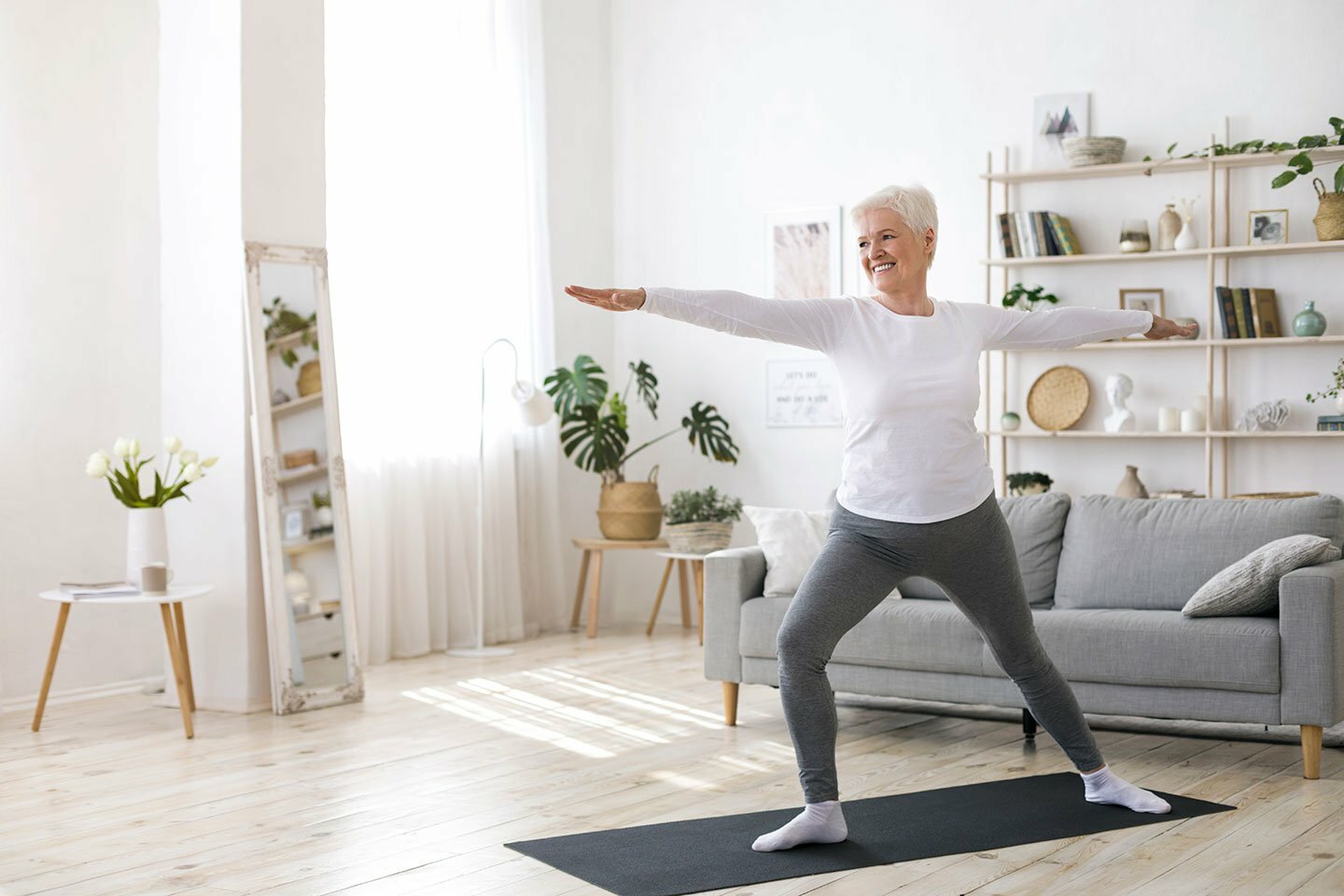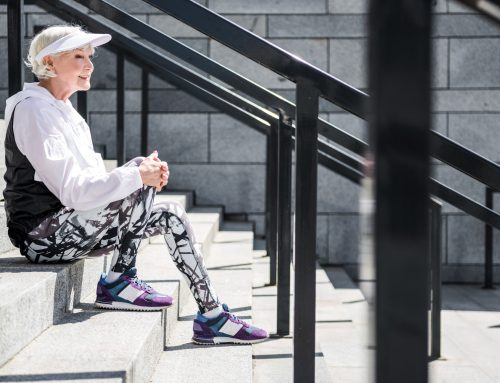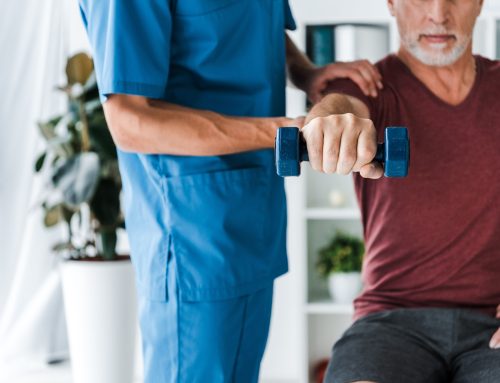
Your bones do some pretty incredible things. They protect your organs, provide your body with a structure, store calcium, and even act as an anchor to your muscles. But just like our muscles, we can lose strength if we don’t maintain a lifestyle that supports them. If you stop working out, you may notice your muscle strength has decreased. You can also lose bone density when you don’t give your bones enough calcium or engage in bone-building exercises. You won’t feel it happening, and osteoporosis can set in before you know it. The only way to find out is through a bone density test.
At the age of 60, there isn’t anything you can do to give your bone density a big boost, but there’s certainly a lot you can be proactive about to maintain what you have. It’s not just you - everyone reaches their peak bone mass by the time they’re 30. From there, it’s a slight decrease over time that shouldn’t affect your day-to-day. However, 2 million Canadians suffer from osteoporosis, making them more prone to fractures and breaks due to abnormally low bone density. By prone, we mean a hospital trip after bumping into your coffee table and breaking your hip. It’s certainly something you want to take action to prevent.
You can adopt a few lifestyle habits to ensure your bones stay strong and healthy to support you. Read on to gain insight on how to increase bone density after 60.
Diet Recommendations To Maintain Bone Density
Your bones are in a cycle of breaking down and being replaced by new bone in your body. Once you hit 30, the rate at which your bone breaks down outpaces the new bone that supports you. To protect your bone density, you’ll need the right kind of food and nutrients to keep you from scoring low on your bone density test.
Get enough calcium and vitamin D.
The most important focus for your bone strength should be calcium, and vitamin D. Calcium is what keeps your bones strong, and vitamin D helps your body absorb calcium. Women over 50 and men over 70 need 1,200 milligrams of calcium per day and 600-800 international units of vitamin D. Some of the best ways to achieve this are:
- Eating a calcium-rich diet with milk, cheese, leafy greens, sardines, and soy products.
- Getting sun exposure for at least 15 minutes a day for vitamin D.
- Eating foods that contain vitamin D, such as tuna fish, fortified orange juice, salmon, or fortified milk.
- Consulting with your doctor about taking supplements if you can’t get enough calcium and vitamin D naturally.
Prioritize your vegetables.
Vegetables are a great low-calorie source of fibre, vitamins, and minerals. Not only are they good for your overall gut health, hair, skin, and energy levels, but they also support calcium turnover. In a group of postmenopausal women who had 9 servings of broccoli, cabbage, and other vegetables saw reduced bone turnover in as little as 3 months. They’re also a great source of vitamin C, which can protect your bone cells from damage.
Have enough protein.
There may be a lot of hype about calcium when it comes to your bones, but protein plays an integral role too. About 50% of your bone is made up of protein, which is why you’ll want to ensure you have up to 100 grams of protein daily. There have been several studies to support this, that include:
- A one-year study of women who had 86 grams of protein per day found that they lost less bone mass in their arm, spine, hip and leg than women who only had 60 grams of protein daily.
- A six-year study of over 144,000 postmenopausal women linked a higher protein intake with a lower risk of forearm fractures and increased bone density.
Consult with your doctor about how much protein you should have in your diet to maintain a healthy lifestyle, and if you haven’t already, ask for a bone density test to see where you land on the scale.
Exercises to increase bone density after 60
Exercise is undoubtedly great for many reasons. Keeping you in shape, keeping you sharp, and giving your body support during the aging process are just a few reasons why you should always incorporate exercise into your routine. However, when you’re focusing on bone density, some are more efficient than others.
Walking.
Walking is easy, works great, and you can do it almost anywhere. Walking outside or in nature can also give you a boost of dopamine. However, if you’re limited on mobility or don’t have access to some great trails, you can lightly march in place, get a walking app to do in front of the TV, or invest in a treadmill. If you want an extra bone density boost, try incorporating 20 jumping jacks daily.
Strength training and resistance exercises.
You have several opportunities to incorporate strength training and resistance exercises to keep your bones strong. This can be as simple as carrying groceries or taken to the next level by joining a local strength training class twice a week. By bearing weight, your muscles and bones respond to the activity by becoming stronger. Some of the best exercises for this include:
- Playing tennis
- Dancing
- Weight lifting
- Resistance band training
- Climbing the stairs
If you have any health concerns, it’s essential to consult with your doctor before starting a new exercise routine.
Don’t forget about balance.
Strength and diet are important, but so is balance. A good test to see if you’re well-balanced is putting one foot (heel to toe) in front of the other for 20 seconds. If you can’t do that without wavering, you may have some work to do.
If you have poor balance, it’s more likely that you’ll sustain an injury. Yoga or tai chi are outstanding balance and strength exercises that can help you avoid a fall.
You don’t need to beat yourself up if you didn’t pay attention to bone strength habits before you turned 30. You can still do plenty to keep your body healthy and supported. Along with following your doctor’s recommendations, maintaining a healthy weight, being intentional with your diet, and including a well-rounded exercise routine, other at-home devices can boost your bone-building power. If you have 10 minutes a day to work on your health in the comfort of your bedroom or living room, you’ll want to learn more about the Marodyne LiV device. It helps Canadians improve bone health, build muscle strength, and provide relief for aches and pains. Contact our experts to discover if it’s the perfect compliment to your health routine.
Did you consider bone strength before you turned 60? What new or old habits are you incorporating to support your bones? Share your thoughts with our readers that are learning about the benefits of maintaining their bone density.



